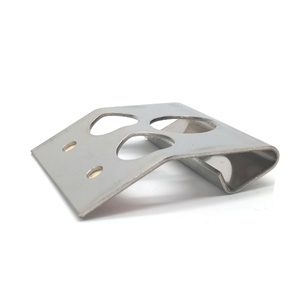The most commonly used materials in the production of precision metal stamping parts mainly include ferrous metals and non-ferrous metals. Specifically:
Ferrous metals mainly include ordinary carbon structural steel, high-quality carbon structural steel, alloy structural steel, carbon tool steel, stainless steel, electrical silicon steel, etc. Among them, stainless steel is an ideal choice for metal stamping because it contains a large amount of chromium, molybdenum and nickel, which has the advantages of corrosion resistance, non-magnetism, very good wear resistance, no electroplating and heat treatment. As a low-cost, high-strength material, mild steel is also widely used in metal stamping, especially in sealing technology, automotive, lawn and garden applications.Non-ferrous metals mainly include pure copper, brass, bronze, aluminum, etc. Aluminum is a non-ferrous metal that is relatively inexpensive and has an excellent strength-to-weight ratio, making parts durable, strong, and lightweight. Copper and brass are also used in metal stamping due to their good formability and wear resistance.
In addition to metal materials, sometimes non-metallic materials are also used for precision stamping parts, but relatively rarely.
When choosing precision metal stamping materials, several principles need to be followed: first, the material must meet the performance requirements of the workpiece, to ensure that the stamping parts work normally in the machine or components and have a certain service life; secondly, the selected material should have good process performance and can be processed in accordance with the requirements of the stamping process; finally, the economy of the material is also an important consideration, and it is necessary to choose the low price, Conveniently sourced materials to reduce the cost of stamped parts.
In conclusion, the material selection of precision metal stamping parts should be determined according to the specific application scenarios and needs to ensure the maximum product quality and economic benefits.
